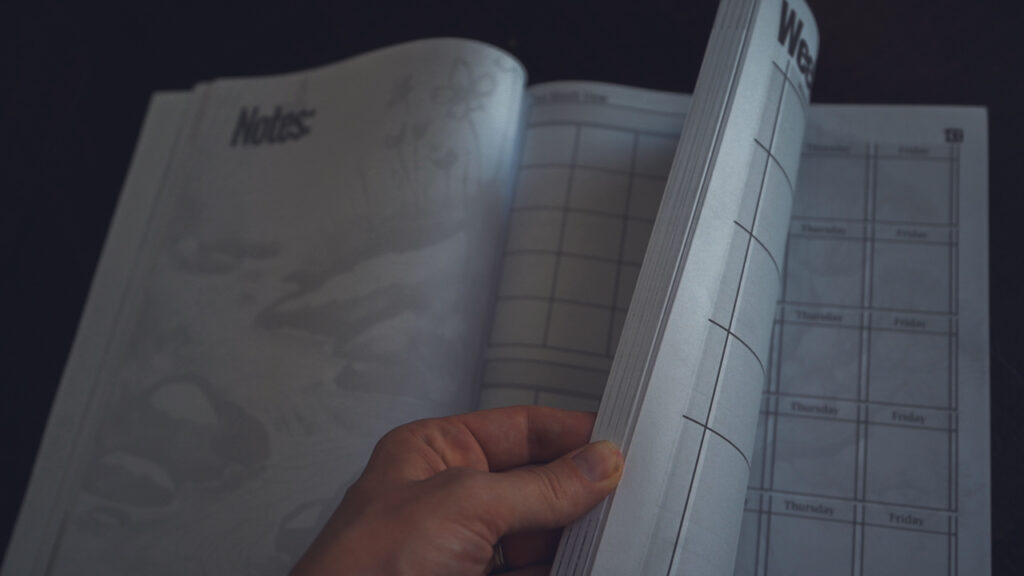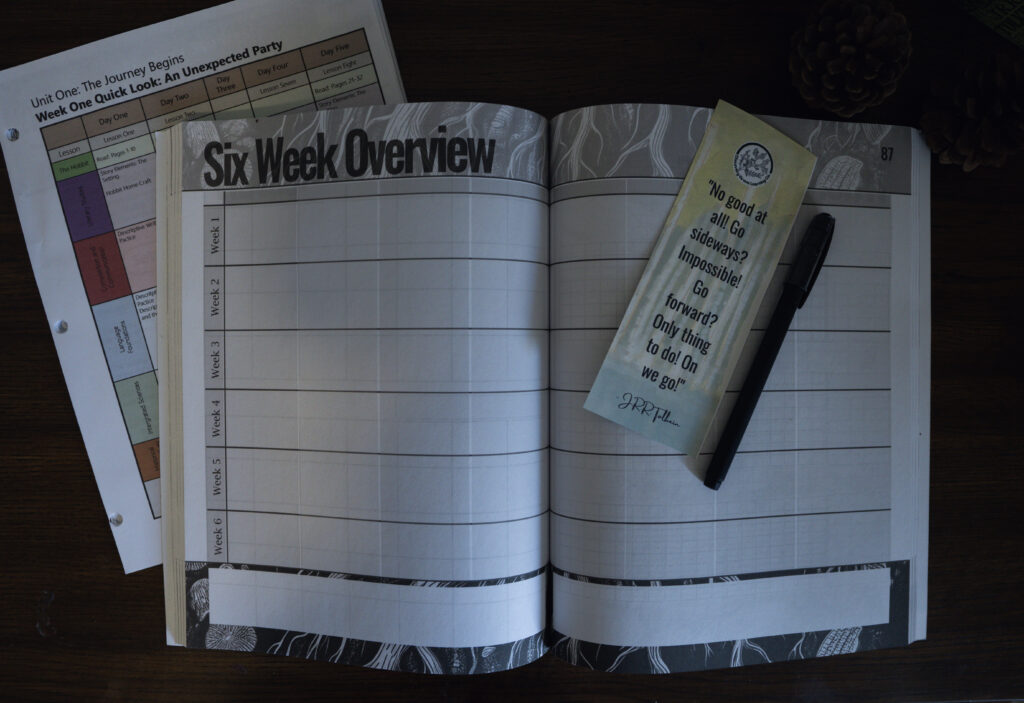Homeschooling offers unmatched freedom, but that freedom can also feel overwhelming. Between juggling lesson plans, household responsibilities, emotional needs, extracurriculars, and your own energy levels, trying to cram your life into a rigid school calendar can leave you more burnt out than empowered.

That’s why more and more homeschool families are embracing a better approach: the Six-Week and Rest Planning System.
This method breaks the year into focused, flexible, and family-friendly blocks—six weeks of intentional learning followed by a dedicated rest week. It’s not just a schedule, it’s a mindset shift. One that honors real-life rhythms, prioritizes sustainability, and gives you permission to pivot without guilt.
The world shifts in seasons, adapting for what’s needed when it’s needed. There’s no reason your homeschool shouldn’t do the same.
Let’s explore why this system works so well—and how you can start using it today.
The Problem With Traditional Timelines
Most of us were raised in conventional schools, so it’s natural to default to thinking in semesters or marking progress in 9-month blocks. But those long timelines are based on institutional needs, not always what’s best for families.
In a classroom setting, the calendar is rigid, with planned breaks that rarely align with a child’s natural growth patterns or a family’s life events. When homeschoolers copy that framework, we often end up:
- Over-planning without enough margin
- Falling behind when someone gets sick or plans change
- Forcing content instead of following curiosity
- Feeling failure when we can’t “stick to the schedule”
Here’s the truth: homeschool doesn’t have to look like public school. You don’t need to follow the same pacing or fit your life into someone else’s box.
The Six-Week and Rest System: A Rhythmic Alternative

Instead of thinking in long stretches of time, this system encourages you to think in manageable blocks. Here’s how it works:
- 6 weeks of focused learning
- 1 week of rest, review, or reset
- Repeat 5–6 times per year
Simple. Intentional. Flexible.
Rather than pushing through an entire semester or term, you have natural checkpoints built into your year. This block planning approach provides clear start and stop points, making it easier to stay motivated, track progress, and adjust course as needed.
Why It Works (and Why It Feels So Good)
1. It Honors Natural Rhythms—Yours and Theirs
We aren’t machines. Neither are our kids. Everyone has cycles of productivity and fatigue, curiosity and resistance. The six-week block embraces this by planning in bursts of effort followed by intentional downtime.
That one-week break isn’t “wasted” time. It’s when your brain catches up, your house gets reset, your kids decompress, and your heart regains energy. Many families use it to catch up on life, reflect, plan the next block, or dive into creative or seasonal activities.
2. It Gives You Space to Pivot Without Guilt
Let’s say halfway through the year, your kids become obsessed with weather, outer space, or medieval castles. With traditional planning, pivoting can feel like “getting off track.” With the six-week block system, changing direction is built in.
Each rest week becomes a checkpoint: Do we want to keep going with this? Shift gears? Revisit something we didn’t finish?
There’s freedom in the framework—you get the benefit of structure, without being trapped by it.
3. It Prevents Burnout (Especially for the Parent)
You can’t run on fumes all year long. When you build rest weeks into your calendar, you give yourself permission to pause, breathe, reflect, and reconnect.
You can use the week for:
- Household deep cleans
- Organizing school supplies
- Taking mini trips
- Planning ahead
- Personal rest or creative time
This rhythm honors your work as the educator, homemaker, and human being. The more refreshed you are, the better you show up for your kids.
4. It Teaches Time Management and Reflection
Instead of plowing through content mindlessly, the block system creates a natural rhythm of reflection and goal-setting.
At the beginning of each six-week term, you and your children can ask:
- What are we excited to learn?
- What worked last time?
- What do we want to do differently?
This builds ownership, intentionality, and emotional intelligence—skills just as valuable as anything in your curriculum.
5. It Builds Momentum
Six weeks is short enough to keep focus, but long enough to make progress. It creates a sustainable pattern of achievement and reward. Families often find that kids stay more engaged knowing there’s a break on the horizon.
It also creates a celebratory rhythm:
- End each block with a showcase, project, or fun family day
- Start each new block with something exciting or themed
- Use rest weeks for seasonal traditions, nature study, or field trips
Your homeschool life begins to feel like a series of meaningful journeys, not an exhausting marathon.
Planning in Blocks vs. Planning by Timelines
The biggest shift? Stop thinking in months or semesters. Start thinking in blocks.
Instead of asking:
“What should we be doing in October?”
You ask:
“What are we focusing on in Block Two?”
This removes the pressure of being “behind” or “ahead.” Each block becomes a unit with its own purpose, goals, and identity. You aren’t bound to a date—you’re anchored in rhythm and intention.
And if life throws a curveball? You take an extra rest week. Or you rework your next block. It’s built to flex with real life.
What You Can Do in a Six-Week Block

Because it’s time-boxed, a six-week block is perfect for:
- Finishing a novel or unit study
- Completing a hands-on project
- Exploring a science or history topic
- Mastering a new skill or habit
- Deep-diving into a theme
Want to do a family study on weather, including crafts and outdoor observation? That fits too.
Want to do six weeks of math review before moving forward? Done.
It’s also a great way to break up longer studies for units that don’t fit into six weeks. For example, our upcoming Art of Language with The Hobbit is made to be 14 weeks long. But, because Discovery Grove Learning Co. operates in the six-week rhythm, the course is 12 weeks of lessons with a rest week after week 6 and a rest week after week 12. This is done to reinforce that rest is just as much a part of learning as grammar symbolizing, and building a map of Middle-earth.
You plan with purpose, knowing you’ll have a reset soon.
What to Do During the Rest Week
Rest doesn’t mean lazy. It means different energy. You might choose to:

- Declutter your homeschool space
- Let kids guide the week with free learning
- Bake together, do crafts, or prep for a holiday
- Catch up on subjects that ran long
- Watch documentaries or take day trips
- Plan extra meet-ups with friends
- Do absolutely nothing schoolish—and be okay with that
Many parents find this week to be a lifesaver in preserving long-term enthusiasm and reducing burnout. And remember, the goal of a rest week is not to fill it with a bunch of stuff.
It’s intentional rest. It’s not doing everything you wish you always did and didn’t have time for (though that can indicate that you may want to shift some priorities in the next block!)
These might be woven into your normal homeschooling, but during rest week – if you do anything schoolish – these are the things to do!
How to Start Using the Six-Week and Rest Planning Method
Ready to shift from overwhelmed to intentional? Here’s how to get started:
- Choose Your Yearly Framework
Plan out 5–6 six-week blocks for the year. Add in rest weeks between them—and longer breaks in winter and summer as needed. - Name Your Blocks
Give each block a theme or anchor (e.g., “Hobbit Study,” “Winter Nature Study,” “Colonial America”). This helps you stay focused and excited. - Create a Simple Plan
Don’t overfill your weeks. Choose 1–3 major learning goals per block, and let the rest support them. - Use Your Rest Weeks
Schedule your rest weeks intentionally—don’t use them as catch-up unless that’s truly needed. Resting is the productivity. - Adjust as You Go
Remember: the system serves you. If a block needs to shift, shift it. If something’s not working, tweak it next round. Six weeks give a good enough time to see if something is working well or not.
Ready to Make It Even Easier?
I’ve designed a planner built around this exact rhythm: The Bare-Roots Planner: A Six-Weeks & Rest Homeschool Rhythm.
Inside, you’ll find:
- Block-based planning pages
- Six-week overview pages
- Family-style learning
- Supports up to six students
- Room to brainstorm themes, track projects, and pivot easily
- Clean design that keeps you focused, not overwhelmed

You Don’t Need a Perfect Plan—You Need a Better Rhythm
Your homeschool isn’t just about what gets done on paper—it’s about the life you’re building, the values you’re honoring, and the energy you bring to your days.
By switching to a six-week and rest rhythm, you’re choosing:
- Sustainability over burnout
- Intention over chaos
- Connection over checking boxes
The calendar doesn’t control you. You get to choose what works for your family—and this system is a beautiful place to start.